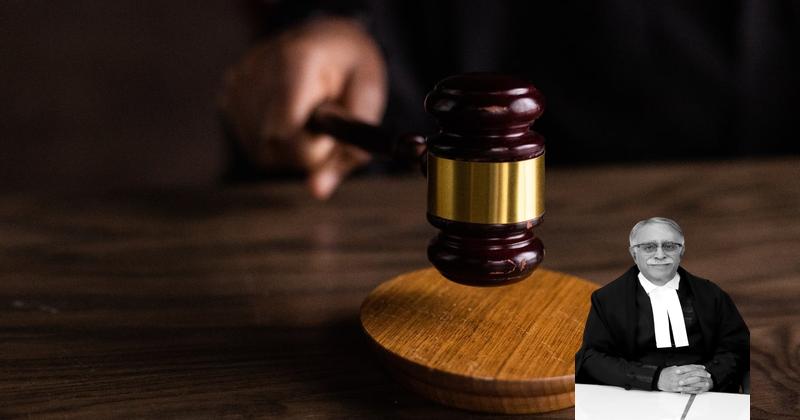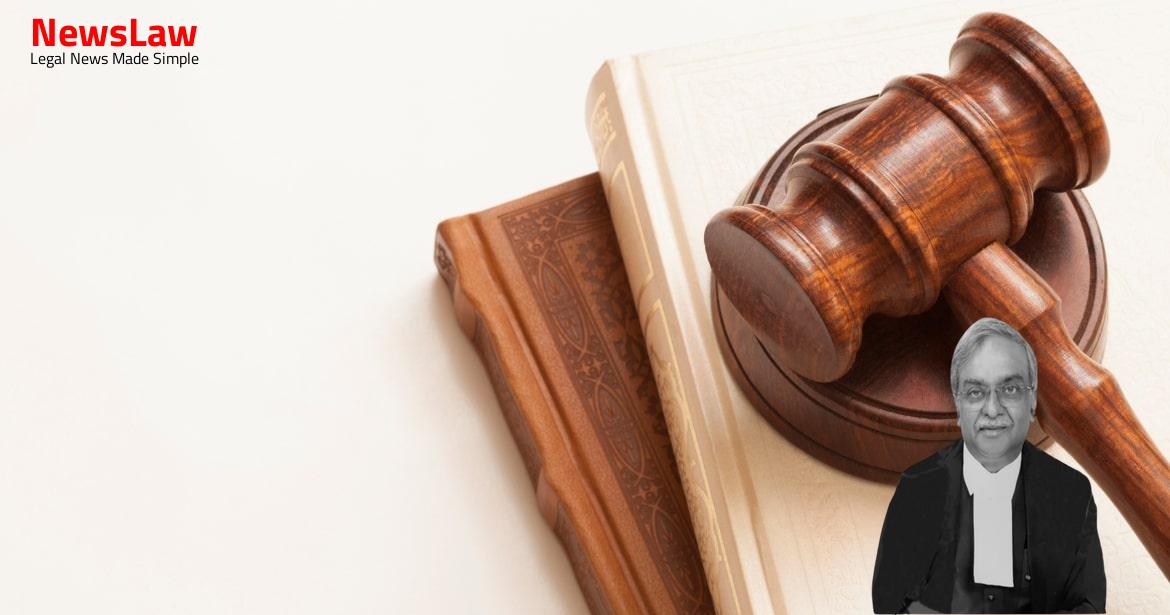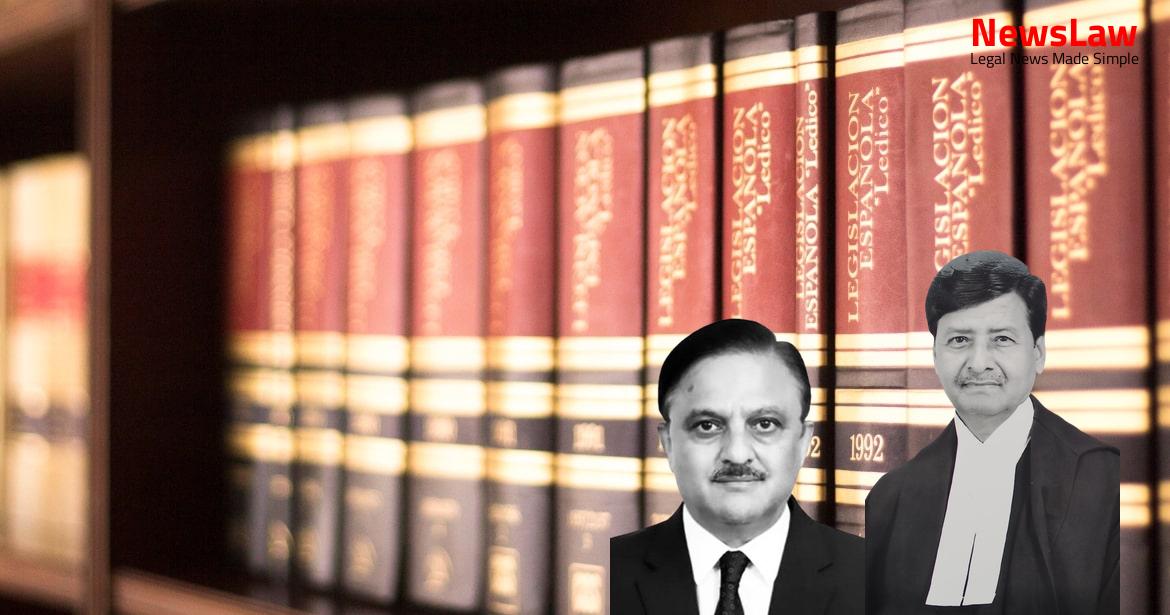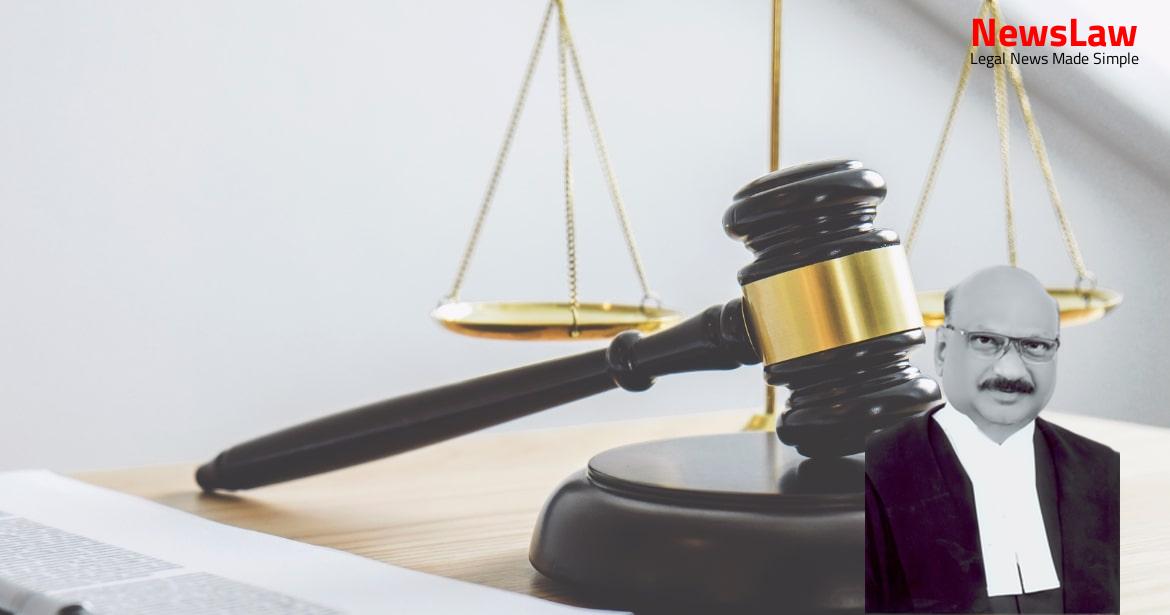2) Whether DNA evidence can form the solitary basis in determining the guilt of the appellant? The Trial Court vide judgment dated 27.11.2014 rendered in Sessions Case No.407/2010, convicted the accused in connection with all the offences and imposed capital punishment for the charge under Section 302 IPC and sentence of imprisonment for other offences. In default, rigorous imprisonment for a time period of 3 months. In default, rigorous imprisonment for a time period of 3 months.
Sudhir Shantaram, 2 Investigating Officer (Ext.65) and PW 13 – Deputy Commissioner of Police Deepak Pundalik Devraj, 3 Investigating Officer (Ext.67); and 4) Testimonies of the witnesses to the recovery of incriminating articles, i.e., PW 5 – Bipin Sohanlal Bafna (Ext.34), PW 7 – Suresh Ganpat Chillawar First Investigating Officer – conducted search on 12.06.2010 PW 7 Suresh Jagdish Khandelwal Panch Witness – for search conducted on 16.06.2010 PW 8 Vishal Navin Chandra Saha Panch Witness – for search conducted on 17.06.2010 PW 9 Vijay Sudama Soni Panch Witness – crime spot witness on 12.06.2020 PW 10 Ramlakhan Jaiswal Panch Witness – crime spot witness on 12.06.2020 PW 11 Ashok Sonar Head Constable – registered Report on 12.06.2010 PW 12 A.P.I. Anjali Pimple (PW 4), who examined the body of the prosecutrix, has testified to the factum of the post-mortem conducted by her and preparation of medical report (Ext.28) thereof.
PW 6 (the 1 Investigating Officer) in the presence of Panch Witnesses – PW 9 and PW 10, recovered the body of the prosecutrix and sent it for post-mortem, which was conducted by PW 4. Thereafter, further investigation was entrusted to PW 13 – the Deputy Commissioner of Police (the third Investigating Officer), who, on the basis of disclosure statement of the appellant, conducted the search at two places, including the house of the appellant previously searched on 13.6.2010. On oath, PW 1, (father of the prosecutrix) categorically admits that he had not expressed any doubt on any person for having caused the death of his daughter. PW 2, the mother of the prosecutrix, while corroborating the testimony of her husband, added that till 14.6.2010 she was not aware as to who had assaulted and killed her daughter.
A recent judgement of this Court authored by one of us (Vikram Nath, J.) has highlighted the well settled law on circumstantial evidence in Indrajit Das v. Firstly, that every link in the chain of circumstances necessary to establish the guilt of the accused must be established by the prosecution beyond reasonable doubt and secondly, all the circumstances must be consistent pointing out only towards the guilt of the accused. We need not burden this judgment by referring to other judgments as the above principles have been consistently followed and approved by this Court time and again.” To establish the guilt of the appellant, the prosecution relies upon the following circumstances: a) The appellant was residing in the same chawl as that of the prosecutrix; b) Appellant was found near the scene of the crime; c) The appellant made disclosure statements, i.e., dated 16.6.2010 Ext.47 and dated 17.6.2010 Ext.50, which led to the recovery of incriminating articles vide Memo No. Even if the version of the mother of having seen the appellant and giving him a matchbox, in the early hours of 12.6.2010, is believed, the same does not advance the case of the prosecution any further.
PW 12 states that “the father of deceased expressed suspicion against the appellant and at the time of his house search was taken.” and PW 1 states that “He did not suspect anyone prior to 14.6.2010.” The search was conducted on 13 and not on 14 of June, 2010. Living in the same chawl, cannot be, in the attending facts of no one having identified with certainty the exact house/room of the appellant, a circumstance pointing to the guilt of the appellant. None of the witnesses have deposed that it was at the instance of the appellant that the prosecutrix left the house, nor has anyone deposed to the effect of having seen the appellant and the prosecutrix together at any point in time; Appellant was not even a visitor to the house of PW 1. It is a matter of record that police recovered only one 16 nicker belonging to the prosecutrix, which was recovered at the time of the second search conducted on 16.6.2010, which renders the recovery by PW 13 in the presence of PW 9 to be extremely doubtful, specifically when the search and subsequent recovery of incriminating articles is refuted.
According to his version, on 16.6.2010, the appellant, while in police custody, made a disclosure statement (Ext.47) in the 17 presence of independent witnesses PW 7 and P.K Mehta (not examined). One Ganesh Bheema (Ganesh Kapildev Mishra) opened the door of the 18 room and, as per the disclosure by the appellant, the police recovered certain incriminating articles vide Memo (Ext.51) dated 17.6.2010. All the articles recovered prior to 17.6.2010 were sent for scientific analysis vide letters Ext.68 and Ext.69 both dated 16.6.2010, the blood sample of the appellant was sent for DNA profiling. The Investigating Officer admits that the said house was occupied by one Ganesh Bheema, who was never examined in the case, so also why and what is that Munna Saroj disclosed on 19.6.2010, has not seen the light of the day. Though, PW 13 is silent on this fact, but perusal of the said disclosure statements (Ext.47 & Ext.50) reveals the same to have been recorded in Marathi and the Investigating Officer not having ever read over or explained contents thereof to the appellant in his vernacular language. … There is no doubt that ordinary court proceedings in Hyderabad are conducted in Urdu, but Urdu is certainly not the spoken language of even the majority of the people within the Hyderabad State. There is nothing on record to show that it was not practicable to record evidence of the appellant as well as others, whose vernacular was not Marathi, but Hindi.
Further, PW 1 has stated that the key of the room, after effecting recovery on 16.6.2010, was given to the “room partner of the accused”. Such room partner remains unexamined and his complicity and role in the crime not explored. Significantly, PW 9 states that on 12.6.2010 the dead body of the prosecutrix was recovered from the nala and that “one nicker was lying on a tin shade. On this issue, further contradiction emerges through the testimony of PW 10 who states that “there were no clothes on her person” but in the very next breath adds that “she had worn underwear on her person”, and also that “he had not seen the body of the deceased girl”. This is for two reasons : (1) If the alleged house of the appellant was thoroughly searched on 13.6.2010, as is evident from memo Ext.35 and recovery memo Ext.36, then the question of recovery of articles on 16.6.2010 should not arise.
Also Read: https://newslaw.in/supreme-court/differences-between-parties-and-witnesses-in-a-civil-suit/
In terms of the aforesaid, the articles, be that of the appellant or that of the prosecutrix recovered on 12, 13 and 14 of June, 2010, are as follows : Muddemal sealed by Medical Officer of the prosecutrix procured on 12.06.2010 S.No.
D Vaginal fluid swab.
E Vaginal fluid swab. 7 Articles of the Appellant procured on 13.06.2010 8. – One piece of green, yellow, and blue coloured nylon mat. 16 Muddemal sealed by Medical Officer, in medical examination of appellant conducted on 14.06.2010 17. Bottle 3 Blood sample (citrate). Bottle 4 Pubic hair sample.
Also Read: https://newslaw.in/supreme-court/high-courts-analysis-on-interference-with-arbitral-awards/
The first alleged blood sample of the appellant collected on 14.6.2010 was sent for analysis vide communication dated 16.6.2010 (Ext.60). The second alleged blood sample of the appellant taken on 20.7.2010 was sent the very same day vide communication (Ext.72).
State of Haryana (two-Judge), observed the necessity of compliance with Section 53A, which later on was clarified in Rajendra Prahladrao (2011) 7 SCC 130 31 Wasnik v. If reasonable grounds exist, then a medical examination as postulated by Section 53-A(2)
CrPC must be conducted and that includes examination of the accused and description of material taken from the person of the accused for DNA profiling…” (Emphasis Supplied) 58.
We may observe that the Maharashtra Police Manual, when speaking of the integrity of scientific evidence in Appendix XXIV states- “The integrity of exhibits and control samples must be safeguarded from the moment of seizure upto the completion of examination in the laboratory.
On the need for expedition in ensuring that samples when collected are sent to the concerned laboratory as soon as possible, we may refer to “Guidelines for collection, storage and transportation of Crime Scene DNA samples For Investigating Officers- Central Forensic Science Laboratory Directorate Of Forensic Sciences Services Ministry Of Home Affairs, Govt. A chain of custody document in other words is a document, “which should include name or initials of the individual collecting the evidence, each person or entity subsequently having custody of it, dated the items were collected or transferred, agency and case number, victim ’ s or suspect ’ s name and the brief description of the item.” Indisputably, these “without any delay” and “chain of custody” aspects which are indispensable to the vitality of such evidence, were not complied with. The DNA profile of blood detected on ex16 Card board, ex 17 Blanket, ex 18 two pieces of tile, ex 20 Towel, ex 24 piece of cloth from pillow, and blood detected on ex 1 knicker of victim Sayunmbano M.A. Like all other opinion evidence, the probative value accorded to DNA evidence also varies from case to case, depending on the facts and circumstances and the weight accorded to other evidence on record, whether contrary or corroborative. This Court highlighted the need to ensure quality in the testing and eliminate the possibility of contamination of evidence; it also held that being an opinion, the probative value of such evidence has to vary from case to case.” In the present case, even though, the DNA evidence by way of a report was present, its reliability is not infallible, especially not so in light of the fact that the uncompromised nature of such 37 evidence cannot be established; and other that cogent evidence as can be seen from our discussion above, is absent almost in its entirety.
It is on the basis of the said medical evidence that the courts, without recording any findings with regard to the circumstances being unrefuted, convicted the appellant despite there being contradictions, material in nature, belying the prosecution case and the veracity of the statement of witnesses, so also impeaching their credibility.
Also Read: https://newslaw.in/supreme-court/promotion-policy-for-rank-of-avm-in-indian-air-force/
Despite such painful realities being part of this case, we cannot hold within law, the prosecution to have undergone all necessary lengths and efforts to take the steps necessary for driving home the guilt of the appellant and that of none else in the crime. This fact, coupled with the duty upon the investigating authorities not only to protect the citizens of the country, but also ensure fair and proper investigations into crimes affecting the society, as in the present case, casts upon such authorities, in the considered view of this Court, not only legal, but also a moral duty to take all possible steps within the letter of the law to bring the doers of such acts to the book. 78.
Case Title: PRAKASH NISHAD @ KEWAT ZINAK NISHAD Vs. THE STATE OF MAHARASHTRA (2023 INSC 561)
Case Number: Crl.A. No.-001636-001637 / 2023



